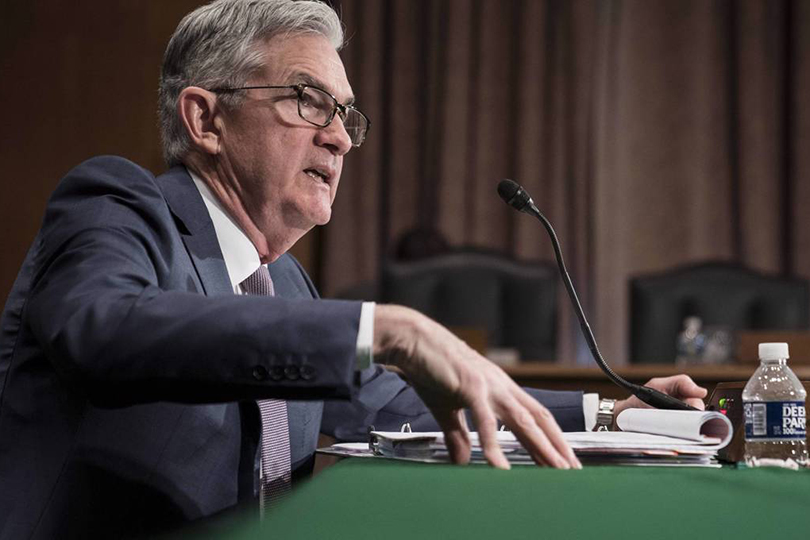Only monetary policy addresses credit throughout the economy. Until inflation and real interest rates rise from the grave, only a policy of effective deep negative interest rates, backed up by measures to prevent cash hoarding by financial firms, can do the job.
For those who viewed negative interest rates as a bridge too far for central banks, it might be time to think again. Right now, in the United States, the Federal Reserve – supported both implicitly and explicitly by the Treasury – is on track to backstop virtually every private, state, and city credit in the economy. Many other governments have felt compelled to take similar steps. A once-in-a-century (we hope) crisis calls for massive government intervention, but does that have to mean dispensing with market-based allocation mechanisms?
Blanket debt guarantees are a great device if one believes that recent market stress was just a short-term liquidity crunch, soon to be alleviated by a strong sustained post-COVID-19 recovery. But what if the rapid recovery fails to materialize? What if, as one suspects, it takes years for the US and global economy to claw back to 2019 levels? If so, there is little hope that all businesses will remain viable, or that every state and local government will remain solvent.
A better bet is that nothing will be the same. Wealth will be destroyed on a catastrophic scale, and policymakers will need to find a way to ensure that, at least in some cases, creditors take part of the hit, a process that will play out over years of negotiation and litigation. For bankruptcy lawyers and lobbyists, it will be a bonanza, part of which will come from pressing taxpayers to honor bailout guarantees. Such a scenario would be an unholy mess.
Now, imagine that, rather than shoring up markets solely via guarantees, the Fed could push most short-term interest rates across the economy to near or below zero. Europe and Japan already have tiptoed into negative rate territory. Suppose central banks pushed back against today’s flight into government debt by going further, cutting short-term policy rates to, say, -3% or lower.
For starters, just like cuts in the good old days of positive interest rates, negative rates would lift many firms, states, and cities from default. If done correctly – and recent empirical evidence increasingly supports this – negative rates would operate similarly to normal monetary policy, boosting aggregate demand and raising employment. So, before carrying out debt-restructuring surgery on everything, wouldn’t it better to try a dose of normal monetary stimulus?
A number of important steps are required to make deep negative rates feasible and effective. The most important, which no central bank (including the ECB) has yet taken, is to preclude large-scale hoarding of cash by financial firms, pension funds, and insurance companies. Various combinations of regulation, a time-varying fee for large-scale re-deposits of cash at the central bank, and phasing out large-denomination banknotes should do the trick.
It is not rocket science (or should I say virology?). With large-scale cash hoarding taken off the table, the issue of pass-through of negative rates to bank depositors – the most sensible concern – would be eliminated. Even without preventing wholesale hoarding (which is risky and expensive), European banks have increasingly been able to pass on negative rates to large depositors. And governments would not be giving up much by shielding small depositors entirely from negative interest rates. Again, given adequate time and planning, doing this is straightforward.
Negative interest rates have elicited a blizzard of objections. Most, however, are either fuzzy-headed or easily addressed, as I discuss in my 2016 book on the past, present, and future of currency, as well as in related writings. There, I also explain why one should not think of “alternative monetary instruments” such as quantitative easing and helicopter money as forms of fiscal policy. While a fiscal response is necessary, monetary policy is also very much needed. Only monetary policy addresses credit throughout the economy. Until inflation and real interest rates rise from the grave, only a policy of effective deep negative interest rates can do the job.1
A policy of deeply negative rates in the advanced economies would also be a huge boon to emerging and developing economies, which are being slammed by falling commodity prices, fleeing capital, high debt, and weak exchange rates, not to mention the early stages of the pandemic. Even with negative rates, many countries would still need a debt moratorium. But a weaker dollar, stronger global growth, and a reduction in capital flight would help, especially when it comes to the larger emerging markets.
Tragically, when the Federal Reserve conducted its 2019 review of policy instruments, discussion of how to implement deep negative rates was effectively taken off the table, forcing the Fed’s hand in the pandemic. Influential bank lobbyists hate negative rates, even though they need not undermine bank profits if done correctly. The economics profession, mesmerized by interesting counterintuitive results that arise in economies where there really is a zero bound on interest rates, must share some of the blame.
Emergency implementation of deeply negative interest rates would not solve all of today’s problems. But adopting such a policy would be a start. If, as seems increasingly likely, equilibrium real interest rates are set to be lower than ever over the next few years, it is time for central banks and governments to give the idea a long, hard, and urgent look.







Comments